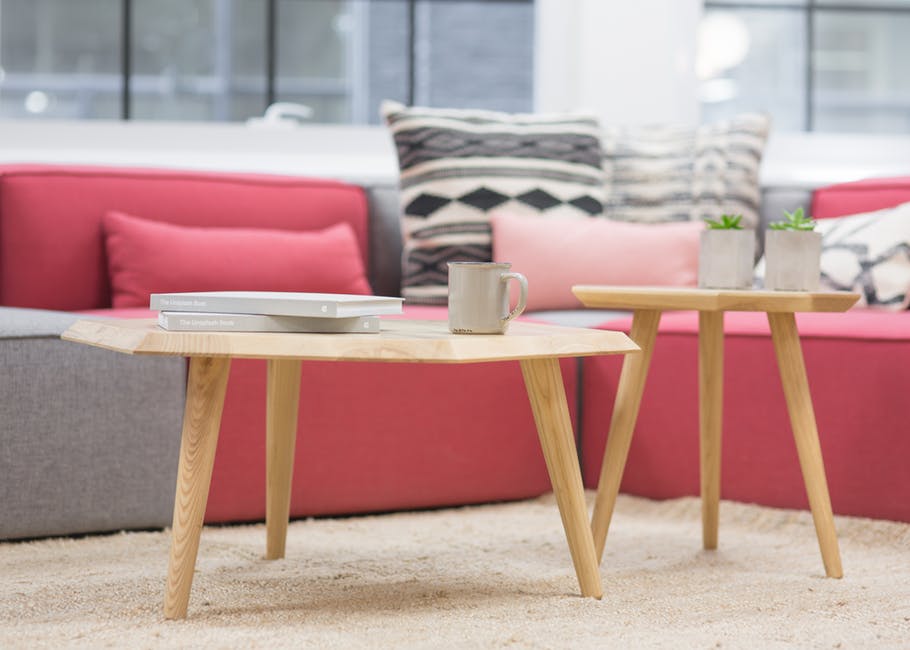Looking for a way to spruce up the design of your living room, but find it difficult to decide on a change that would meet your budget? As we live in an economically challenging times, we aimed at presenting you with a redesigning project, one which you will be able to do all on your own, one which will not cost you an arm and a leg.
If you own an old wooden coffee table, covered in scratches and stains, we recommend refinishing it, and as a result creating a fresh, authentic look. If you feel like it is mission impossible, we are here to prove you wrong, and in only 6 steps. Roll up your sleeves, get down to work, and by the end of the day we promise you’ll have a brand new coffee table.
Table of Contents
Step 1: Find an ideal work area
As this type of project tends to make a little bit of mess, under no circumstances should you start it without organizing a space for work outside. Nevertheless, if you live in an apartment in a densely populated area and moving your project to a garage or backyard is not an option, choose a room which is well-ventilated and no one else will be using while you are working on the project. Before you start, put a piece of plastic cloth on the floor to so that it collects all the sanding dust in one place.
Step 2: Remove the existing finish
Most wooden furniture items are covered in a sealer, paint, or a stain, and whichever type of finish you have on your coffee table, you should first sand it away to expose the raw wood. If you are only looking to use a clear finish or cover the wood with a new layer of stain, you will have to take the finish off completely. Nevertheless, if you only want to paint it over, you can leave some splotches of the initial stain.
When it comes to tools, you’ll need an electric sander (that is, if you wish to achieve fast results). To cut through the current layers of paint with ease, fit the sander with a coarse-grit sandpaper. Also, to sand along legs and other places that are a bit more difficult to reach, you’ll require a sanding sponge. If there are still certain areas you simply cannot get to with this tool, take a small piece of sand paper and wrap it around your finger.
Step 3: Remove the sanding dust
After you finish with the sanding process, use a vacuum cleaner to remove the sanding dust from the table. Once you feel like you’ve removed it all, take a moist rug with white spirits and clean the table to make sure you’ve gotten rid of all the sanding dust.
Step 4: Fill in all remaining scratches
Old wooden furniture tends to have scratches that cannot be so easily removed with sanding. These are not to be so easily overlooked, as they have to be filled before putting on the finishing layer. According to experts from Eastern Suburb furniture restoration, if there are only some minor scratches, you can simply rub them with a pecan or walnut meat, but when it comes to larger ones, take advantage of wood putty to fill them properly.
Step 5: Apply a coat of stain
Although this is not an obligatory step, a new coat of stain can give your table a refreshing look. Once you opt for the shade of stain that will best blend your refurbished coffee table with the exiting furniture in the room, ensure you read the manufacturer’s directions and apply the layer of stain accordingly. For this particular task, you won’t have to invest into costly equipment, as a reasonably priced foam brush will serve you just fine. However, ensure you wipe away the extra stain before allowing it to completely penetrate the wood. This way, you won’t get a rough appearance full of bumps.
Step 6: Finish with a coat of sealer
Whether you did apply a coat of stain or not, don’t forget about one last coat of clear sealer. Not only will it improve its exterior look, but it will keep the wood protected. Polyurethane is probably your safest choice, as it ensures durability and can be easily applied with affordable foam brushes.
Loving the result? Any one of your wooden furniture items can age in style if you take proper care of it, so don’t stop with the coffee table – you can use this article as a basic guide for all your future refurbishing projects.















